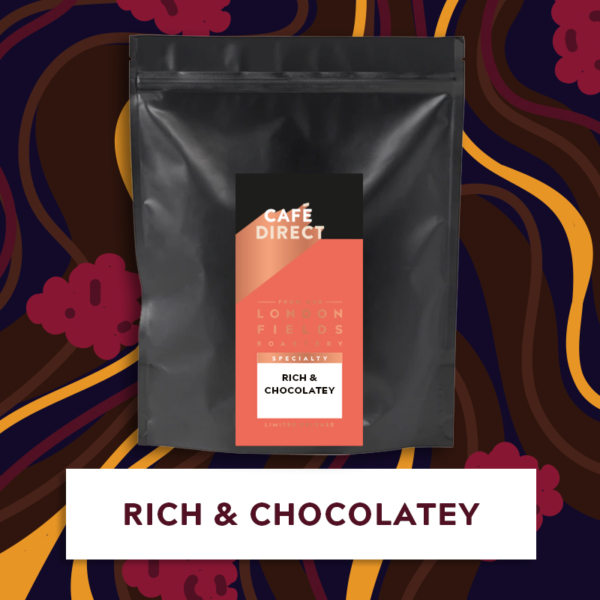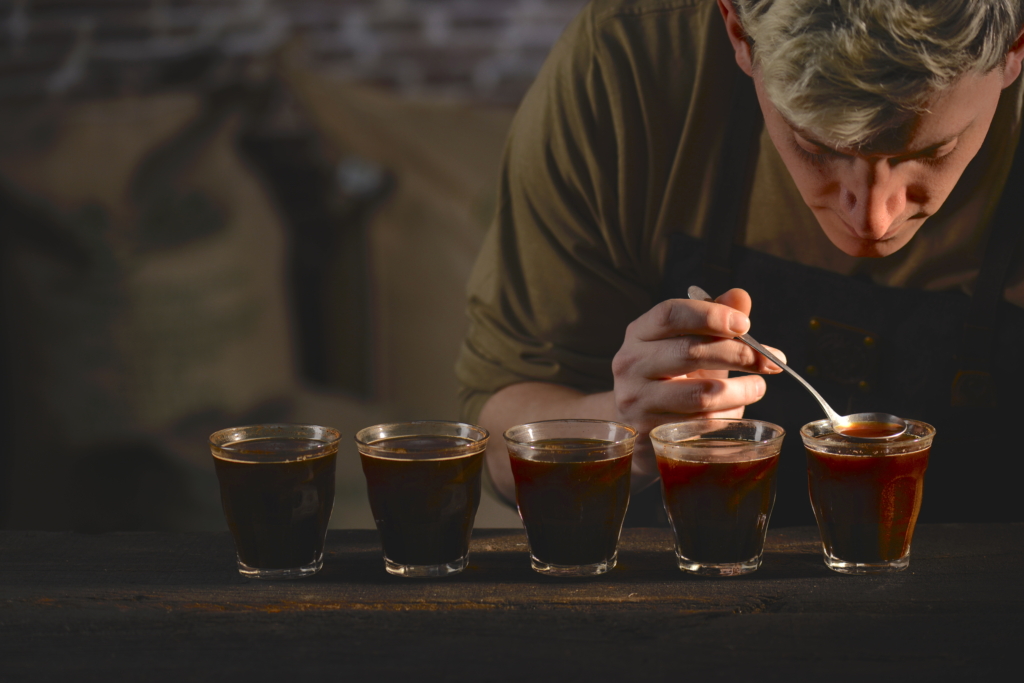
Destination and Discovery under the Spotlight
Here at Cafédirect, we are honoured to allow our subscribers a unique tour around the world of coffee. Our UK coffee subscription offers the opportunity to visit a different country every month and experience what makes that origin special and distinctive. We extensively explore the world for the finest specialty coffee we can find. Although the flavour and quality of the coffee are paramount, we also look for inspiring stories of farmers and co-operatives who battle adversity, support their local communities and lead the way for sustainable farming methods.
Discovery Plan – This amazing plan offers you a new coffee destination every month. We generally want to have distinct coffees that showcase contrasting flavours and aromas each month so that you are experiencing the complexity of different origins. We believe what makes this journey special is that we are often trying new origins and unique processing methods at the same time as you.
Our customers can also choose from our destination offerings named Bright & Aromatic and Rich & Chocolatey. We source a new coffee every few months and aim to find micro lots with the highest quality from some of the best producing countries in the world. The offerings have specific flavour profiles that we try and match with regions that best showcase what we are looking for. There are many factors to coffee producing that allows for specific characteristics and nuances to shine through the coffee. These include climate, terroir, variety, altitude, and processing. Each combine to strongly influence the flavours associated with that origin. For example
Bright & Aromatic – We generally look for coffees from East Africa. The Great Rift Valley has the perfect terroir to produce complex coffees, with the most distinct & nuanced flavours, bright acidity and clean body. Often the flavour profiles are fruity, floral and tropical.
Rich & Chocolatey – We generally look for coffees from the Americas. South America has the terroir and varietals to produce full bodied coffees, with rich chocolatey flavours that are well balanced with sweet notes of caramel and nuts and often with subtle citrus acidity.
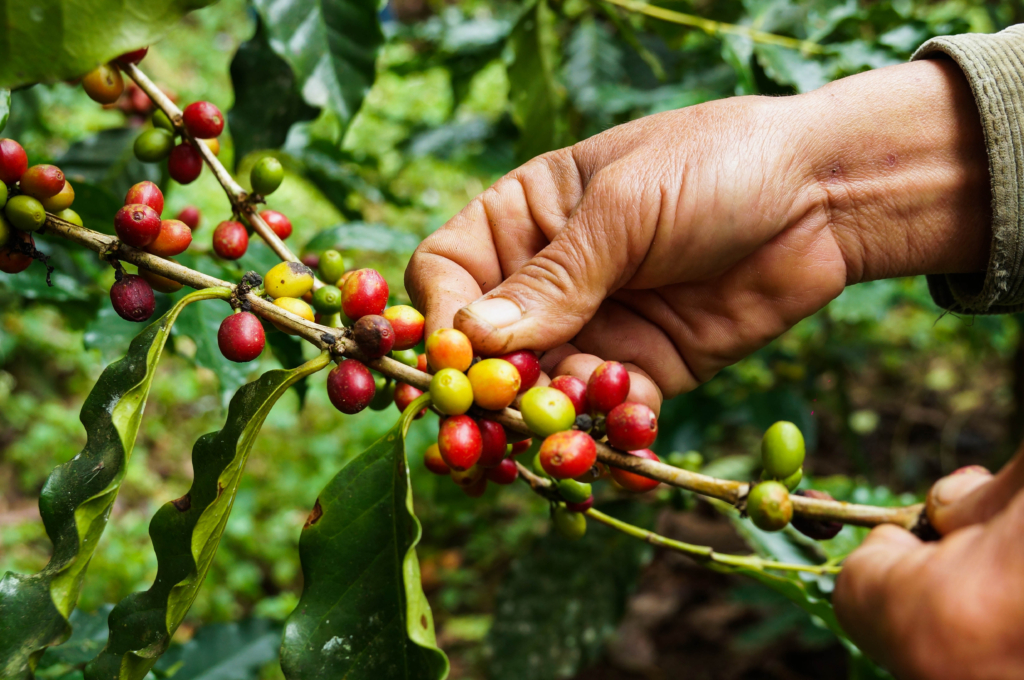
Altitude
Generally speaking the higher the altitude a coffee is grown the more superior flavour it will possess. In hotter climates at lower altitudes trees will thrive, especially in tropical climates. Yet higher temperatures make coffee plants grow more strenuously, increasing the amount of fruits you will harvest. This comes at a consequence to the flavour, becoming diluted through higher leaf quantity. Fast maturing fruits means less sugars can develop within the cherry leading to a lower quality and lack of complex flavours.
Alternatively coffee grown at higher altitudes means colder temperatures. Trees produce less growth and fruit yet they ripen slower and harvest denser beans with concentrated sugars and organic acids that create clear and distinct flavours. Higher altitudes comes with difficulties such as steep slopes and soil erosion making it difficult to hand pick the cherries and manage the fields. Yet those that persist and dedicate to growing at higher altitudes reap the rewards as they produce some of the finest coffees in the world.
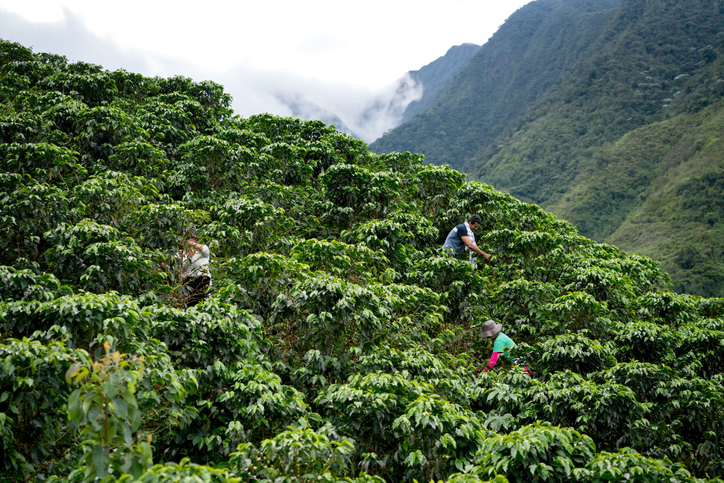
Climate
Although coffee originated in the heart of Africa where the climate is tropical and hot, as previously mentioned, the hotter the climate does not equate to better growing conditions. Arabica coffee actually needs a variety of temperatures in which to flourish. Too hot and the plant can languish, making them susceptible to pests and diseases. Too cold the whole crop can be lost. There needs to be an equilibrium of micro climates for coffee plants to thrive. Ideal conditions are warm days with good sun, allowing the sugars inside the fruit to develop. This is combined with cold nights, which prevents the process from happening too fast and underdevelopment occurring. These optimum conditions occur around the equator, which is why East African and Central American producing regions are considered to be the perfect climates to produce the highest quality coffee.
Rainfall
Rainfall is another important element to coffee producing and quality. Arabica requires around 60-100 inches of rain across a period of nine months. After the first rainfalls, the flowering of the plants follows. Rain is needed throughout the growing season as the coffee develops. Once again the equilibrium of micro climates is prevalent as a dry season is essential whilst the coffee is harvested and dried. Countries such as Colombia have such diverse rainfall that they are able to harvest their crops twice a year. Some countries like El Salvador however, have had disastrous harvests in recent years as rainfall has ruined their crops.
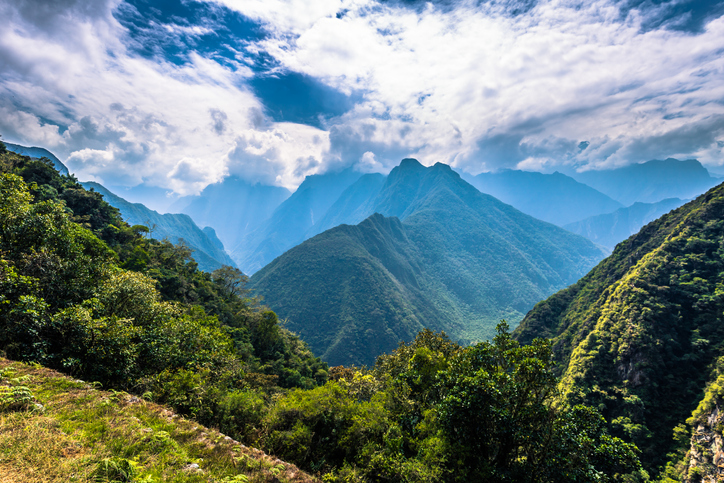
Soil
Soil is the last element of what makes the ideal terroir for coffee producing. Each origin has a specific type of soil with different amounts of acids. For example, malic acid is more common in Kenyan coffees which leads to more blackcurrant and apple notes. Coffee needs light soil with gravel or stones to help the plant stay cool and drained from excess rainfall. It also needs an ideal amount of acidity with a pH of 5 to 7 and good levels of nitrogen and potassium. Many of our favourite tasting coffees have been cultivated on volcanic soil, which is considered ideal soil conditions as it possesses special chemical properties, rich in nutrients and high in acidity.
Processing
After the cherries are picked and sorted for under ripe cherries, the coffee bean needs to be removed from the cherry it has developed in and then dried. There are a few different ways farmers approach this process, each one giving the coffee its own unique characteristics, distinct flavours and different balance Most of this stems from allowing the coffee to ferment in either water or its own intensely flavoured cherry skin.
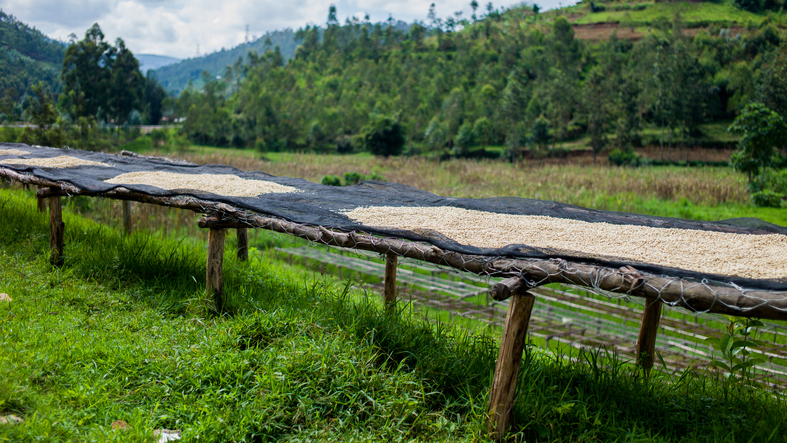
Natural – The skin is left on and taken directly to the drying beds. Producing countries use this process due to a lack of fresh water supply. In Ethiopia where the method was first implemented it is commonly used with outstanding results and complex flavours that are recognisable around the world. We often look for an Ethiopian natural for our Bright & Aromatic offering. As the natural profiles are often wilder in nature, syrupy sweet mouthfeel, with fruit tones being more like stewed fruits that can resemble a booziness in their structure.
Washed – The skin is removed first, then the bean is left to ferment in a water tank before being dried. Removing the wild and intense fruitiness of the cherry skin leaves you with a coffee that has clarity, clean body and highlighted acidity. Washed coffees tend to have lighter bodies, and more citrus fruits tones shine through which is a natural expression of all the sugars and acid development inside the bean. Our Rich & Chocolatey offerings are generally washed as we want the natural expression of the coffees origin to be exposed without any masking from additional fruity flavours from the cherry skin.


25% off
your next order
Enjoy the world's best coffee, freshly roasted & delivered to your door. Sign up to our mailing list for a welcome pack and 25% off your next Cafédirect order!

Thanks for
joining our
mailing list
A welcome pack is on its way and you get 25% off your next Cafédirect order!



